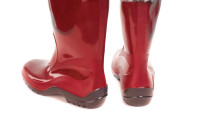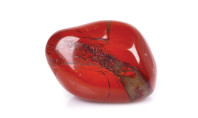Laughter Really is the Best Medicine

There’s no denying the positive impact a hearty laugh has on your mental and emotional state. Whether it’s a shared moment with a group of friends, or a private chuckle all to yourself, laughter simply makes us feel good.
But is this all-natural high actually providing you with any real, long-term health benefits? A growing body of scientific research indicates that it is – and, amazingly, many are physical.
So, since April is National Humor Month, we thought now is a good time to explore the science behind laughter – and find out why a good laugh really can be the best medicine.
Laughter reduces stress and boosts your immune system.
When you’re anxious or stressed out, your body produces elevated levels of “stress hormones” such as cortisol and epinephrine. These hormones suppress your immune system, increase your blood sugar and can leave you vulnerable to a variety of illnesses and infections. But when you laugh, your body’s production of these bad hormones tends to decrease, while production of “good” cells actually increases.
Several studies, including a 2003 survey conducted by a group at the Indiana State University Sycamore Nursing Center, have shown that laughter stimulates your body’s production of B-cells (which produce disease fighting antibodies), T-cells (which help direct and regulate immune responses) and Natural Killer Cells (which attack and destroy tumors and viruses). Aside from boosting your immune system overall, increases in these cells have also been shown to improve the conditions of people suffering from life-threatening diseases such as cancer and HIV.
Laughter lowers blood pressure and helps improve circulation.
In 2005, the University of Maryland Medical Center released a study linking laughter to the healthy functioning of blood vessels. Working with a group of non-smoking adults, researchers showed the volunteers segments from two different movies meant to evoke opposite, extreme ends of the emotional spectrum. For example, the opening scene of Saving Private Ryan, which graphically portrays the intense battle and bloodshed on the beaches of Normandy, was used to evoke stress and anxiety, while a funny scene from the 1996 comedy Kingpin was used to elicit laughter. The researchers found that volunteers had significantly lower blood pressure and better circulation while laughing. According to the study, “Overall, average blood flow increased 22 percent during laughter, and decreased 35 percent during
mental stress.”
This positive change was linked to laughter’s effect on the endothelium – the thin layer of cells that makes up the interior lining of blood vessels. When the volunteers laughed, the endothelium expanded, which allowed for better blood flow and lowered blood pressure.
Since the endothelium plays a critical role in fighting against atherosclerosis (the disease which causes plaque to build up in your arteries and can lead to heart attacks nd strokes – two of the top killers of adult Americans), the study’s results are especially significant. Dr. Michael Miller, principal investigator for the study, summarized it this way: “Laughing may be important to maintain a healthy endothelium, and reduce the risk of
cardiovascular disease.”
Laughter acts as a short burst of exercise, enhances oxygen intake and helps clear your respiratory tract.
Those joyous cramps you feel after a particularly hearty belly laugh are actually a sign that your body’s gotten a good workout. When we “double over” in laughter, the muscles in our diaphragm, abdomen, legs and back contract. In fact, a 2004 study published in the Journal of Women’s Health found that “laughing 100 times is equal in caloric expenditure to 10 minutes on a rowing machine or 15 minutes on an exercise bike.”
In addition to working out your muscles, laughing also forces you to breath deeply and enhances your oxygen intake, much like aerobic exercise. Even those embarrassingly out-of-control bursts of laughter – the kind that turn into bouts of hysterical hiccups or coughing – are actually very good for you. These extreme reactions help clear your respiratory tract and unclog airways by loosening mucus.
Laughter eases discomfort and helps increase your tolerance to pain.
In his revolutionary book Anatomy of an Illness, published in 1979, author Norman Cousins discussed the holistic methods he used for coping with an extremely painful form of arthritis. A major part of his self-adopted treatment included a regular “dose” of laughter, which he induced by watching Marx Brothers comedies. According to Cousins, “I made the joyous discovery that ten minutes of genuine belly laughter had an anesthetic effect and would give me at least two hours of pain-free sleep. When the pain-killing effect of the laughter wore off, we would switch on the motion picture projector again and not infrequently, it would lead to another pain-free interval.”
Cousin’s pleasant discovery is rooted in the way laughter impacts your body’s release of endorphins – the “feel-good” chemicals in your brain that help you cope with pain and exhaustion. When you let out a genuine, hearty laugh, the physical stimulation triggers your body’s release of these chemicals, which in turn helps suppress your pain.
In a recent study led by a group at Oxford University, researchers also discovered a direct correlation between increased pain tolerance and the “dosage” of laughter; they found that people who laughed “harder” by attending a live comedy show actually had a higher pain tolerance than people who watched a funny video on their own and laughed only to themselves.
While no one is suggesting that laughter alone is enough to keep you in perfect health, the evidence certainly points towards undeniable physical benefits. As a result, major health institutions such as the Cancer Treatment Centers of America now recognize humor as a legitimate facet of heath care and have begun to develop ways to routinely incorporate it into their patients’ lives.
In hospitals and care facilities throughout the country, the establishment of “laughter clubs” (a type of group therapy that focuses on laugh-related exercises), “humor rooms” (established places where patients can go to relax, play games and laugh freely), and the use of “humor carts,” which deliver funny items such as comic strips and joke books to the patient’s bedside, are becoming increasingly popular. As more research is conducted, and our understanding of our bodies’ physical connection with laughter continues to improve, it is conceivable that further therapies will also be developed.
When you let out a genuine, hearty laugh, the physical stimulation triggers your body’s release of these chemicals, which in turn helps suppress your pain.
So as you celebrate National Humor Month by swapping a round of jokes with friends, or spending a Saturday afternoon watching your favorite funny movies, remember to laugh hard and laugh loud – after all, it’s what your doctor ordered.




















